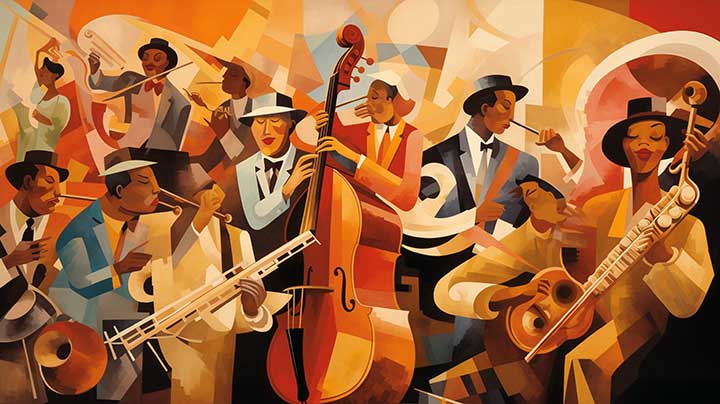Jazz music in the 1940s was a transformative period for the genre. It was a time of innovation, experimentation, and the birth of new sub-genres that would shape the future of jazz. From the swing era to the emergence of bebop, the 1940s marked a significant shift in the sound and style of jazz.
The 1940s began with the continuation of the swing era, which had gained popularity in the 1930s. Big bands led by iconic figures such as Duke Ellington, Count Basie, and Benny Goodman dominated the jazz scene. These bands featured a large ensemble of musicians playing in a coordinated and synchronized manner, creating a powerful and energetic sound. Swing music was characterized by its infectious rhythms, catchy melodies, and lively improvisations.
However, as the 1940s progressed, a new style of jazz began to emerge. This style, known as bebop, was a reaction against the commercialization and predictability of swing music. Bebop was characterized by its complex harmonies, fast tempos, and intricate improvisations. Musicians such as Charlie Parker, Dizzy Gillespie, and Thelonious Monk were at the forefront of this movement, pushing the boundaries of jazz and challenging the traditional norms.
Bebop was a radical departure from the swing era, both musically and culturally. It was a music of rebellion and individual expression, with musicians seeking to break free from the constraints of commercialism and conformity. Bebop was often performed in small groups, allowing for greater improvisation and interaction between the musicians. The music was complex and demanding, requiring a high level of technical skill and musical knowledge.
The 1940s also saw the rise of vocal jazz, with artists such as Billie Holiday, Ella Fitzgerald, and Sarah Vaughan becoming popular. These singers brought a new level of emotion and storytelling to jazz, using their voices to convey the pain, joy, and longing of the human experience. Their performances were often intimate and personal, drawing the listener in and creating a deep connection.
In addition to swing, bebop, and vocal jazz, the 1940s also saw the emergence of other sub-genres within jazz. Latin jazz, for example, blended elements of jazz with Afro-Cuban rhythms and instrumentation, creating a vibrant and energetic sound. Artists such as Dizzy Gillespie and Machito were instrumental in popularizing this style.
The 1940s was also a time of social and political change, which had a profound impact on jazz. The Second World War and the civil rights movement brought issues of race and equality to the forefront, and jazz became a powerful tool for expressing these struggles. Musicians such as Duke Ellington and Charlie Parker used their music to address social and political issues, and jazz became a symbol of resistance and liberation.
Despite the challenges and changes of the 1940s, jazz continued to evolve and thrive. It was a time of great creativity and innovation, with musicians pushing the boundaries of the genre and exploring new possibilities. The music of the 1940s laid the foundation for the future of jazz, influencing generations of musicians and shaping the sound of the genre for years to come.
Jazz music in the 1940s was a period of transformation and innovation. From the swing era to the emergence of bebop, the 1940s marked a significant shift in the sound and style of jazz. It was a time of experimentation, rebellion, and social change, with musicians pushing the boundaries of the genre and exploring new possibilities. The music of the 1940s laid the foundation for the future of jazz, influencing generations of musicians and shaping the sound of the genre for years to come.





